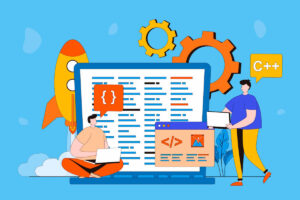In the world of web development, Laravel has emerged as one of the most popular PHP frameworks due to its elegant syntax, robust features, and scalability. With its powerful tools and expressive codebase, Laravel allows developers to build complex web applications with ease. In this article, we will explore some advanced techniques for Laravel software development that can help you take your projects to the next level.
Middleware
Middleware plays a crucial role in Laravel development by providing a mechanism for filtering HTTP requests entering your application. With middleware, you can perform tasks such as authentication, logging, and CSRF protection before the request reaches your application’s core logic. Laravel comes with several built-in middleware options, but you can also create custom middleware to suit your specific needs.
- To create a custom middleware in Laravel, you can use the
php artisan make:middlewarecommand. This will generate a new middleware class that you can then modify to include your desired functionality. - Once your middleware is set up, you can apply it to routes or groups of routes using the
middlewaremethod in your route definition. - Custom middleware is useful for tasks such as rate limiting, request logging, or modifying the request and response objects.
Eloquent ORM
Eloquent is Laravel’s built-in ORM (Object-Relational Mapping) system that simplifies database interactions by allowing you to work with database records as PHP objects. With Eloquent, you can perform common database operations such as querying, inserting, updating, and deleting records without having to write raw SQL queries.
- One advanced technique for working with Eloquent in Laravel is using model observers. Model observers allow you to hook into Eloquent’s lifecycle events (such as creating, updating, and deleting records) and perform actions before or after these events occur.
- By defining observers for your models, you can automate tasks such as sending notifications, updating related records, or logging changes.
- Eloquent relationships, such as one-to-one, one-to-many, and many-to-many, can also be defined to establish connections between different database tables.
Queues and Jobs
In a busy web application, it’s essential to offload time-consuming tasks to background processes to ensure a smooth user experience. Laravel provides a robust queue system that allows you to defer the processing of tasks such as sending emails, generating reports, or processing uploads to a later time.
- To work with queues in Laravel, you can define jobs that encapsulate the logic of the task you want to perform. Jobs are added to a queue and processed by worker processes running in the background.
- By leveraging queues and jobs in your Laravel applications, you can improve performance, scalability, and reliability.
- Laravel’s queue system supports various drivers such as Redis, Amazon SQS, and Beanstalkd for handling queued jobs.
Service Providers
Service providers in Laravel are a powerful tool for organizing and bootstrapping your application’s components. Service providers allow you to register bindings, aliases, middleware, and other services in a centralized location, making it easier to manage dependencies and configure your application.
- By creating custom service providers in Laravel, you can encapsulate the setup logic for specific features or packages and easily integrate them into your application.
- Service providers are registered in the
config/app.phpfile and can be used to configure third-party packages, define routes, or set up event listeners. - Laravel service container can be used within service providers to resolve dependencies and manage the instantiation of objects.
Testing
Testing is a critical aspect of software development that ensures the reliability and stability of your applications. Laravel provides robust support for automated testing through PHPUnit and Laravel’s testing utilities, allowing you to write tests for your application’s components, controllers, and routes.
- With Laravel’s testing capabilities, you can perform unit tests, integration tests, and end-to-end tests to validate your application’s behavior and catch bugs early in the development process.
- By writing comprehensive test suites for your Laravel applications, you can improve code quality, maintainability, and confidence in your software.
- Laravel’s testing tools provide features such as test database transactions, HTTP testing, and mocking to facilitate efficient and thorough testing processes.
By incorporating these advanced techniques into your Laravel software development workflow, you can build more robust, scalable, and maintainable web applications. Whether you’re working on a small project or a large enterprise application, mastering these techniques will help you streamline your development process and deliver high-quality software solutions.
FAQs:
1. What is the role of Middleware in Laravel development?
Middleware plays a crucial role in Laravel development by providing a mechanism for filtering HTTP requests entering your application. It allows you to perform tasks such as authentication, logging, and CSRF protection before the request reaches your application’s core logic.
2. How can custom middleware be created in Laravel?
To create custom middleware in Laravel, you can use the php artisan make:middleware command. This will generate a new middleware class that you can then modify to include your desired functionality. Once set up, you can apply it to routes or groups of routes using the middleware method in your route definition.
3. What is Eloquent ORM in Laravel?
Eloquent is Laravel’s built-in ORM (Object-Relational Mapping) system that simplifies database interactions by allowing you to work with database records as PHP objects. It enables common database operations such as querying, inserting, updating, and deleting records without the need for raw SQL queries.
4. What are model observers in Laravel’s Eloquent ORM?
Model observers in Laravel’s Eloquent ORM allow you to hook into Eloquent’s lifecycle events (such as creating, updating, and deleting records) and perform actions before or after these events occur. By defining observers for your models, you can automate tasks such as sending notifications, updating related records, or logging changes.












+ There are no comments
Add yours